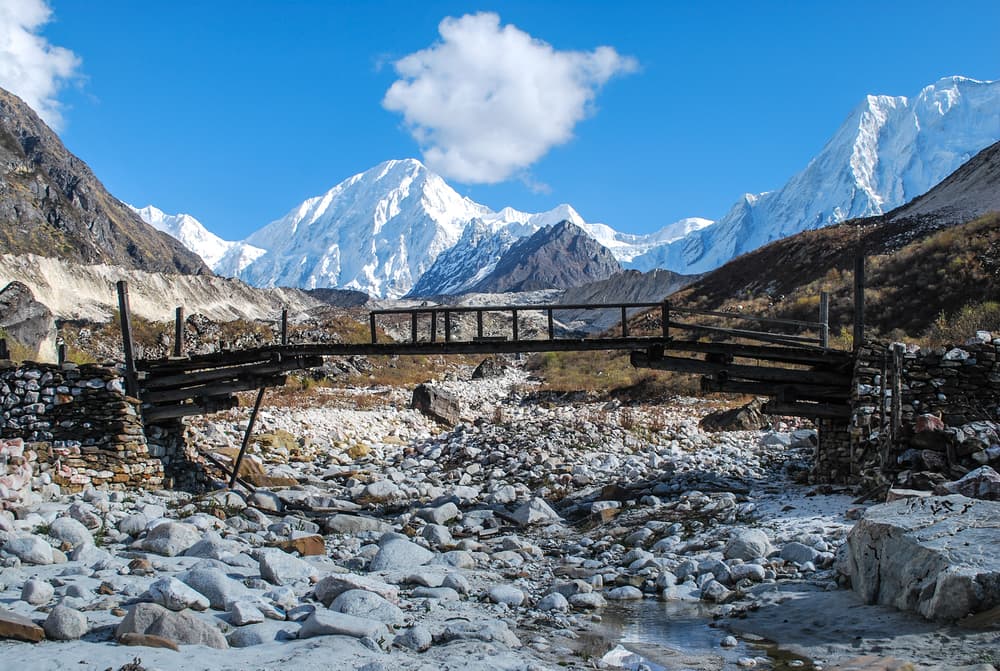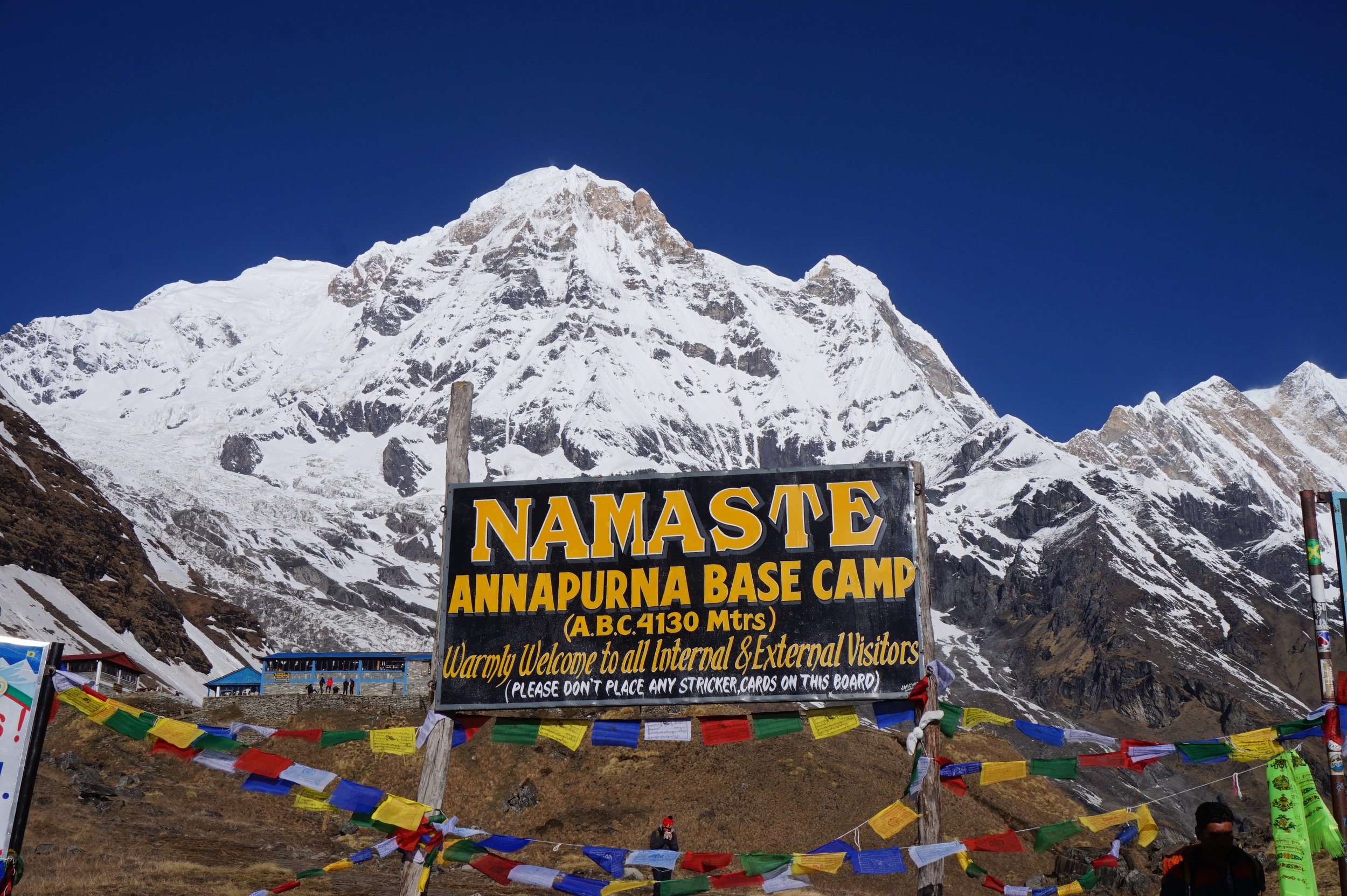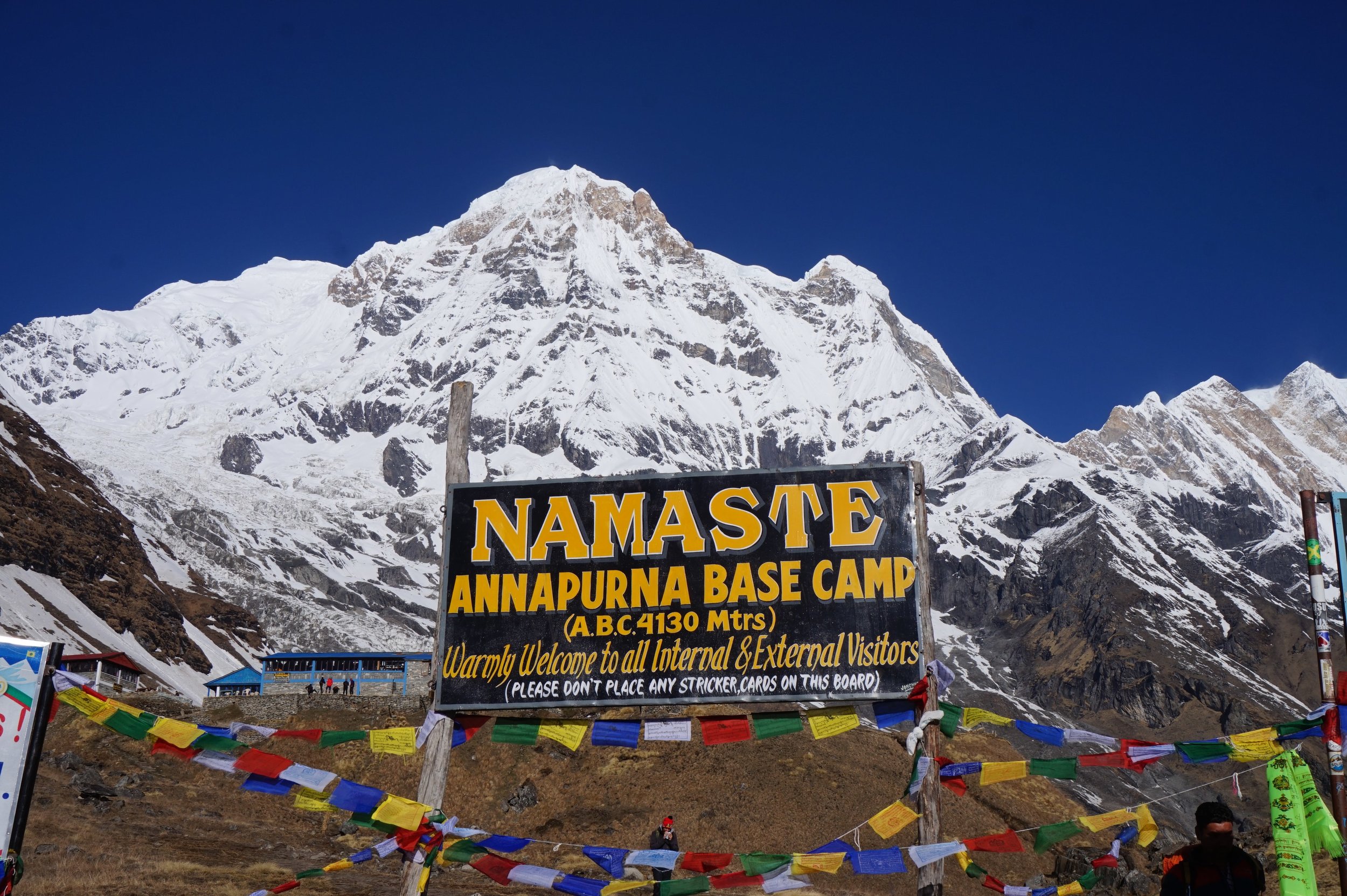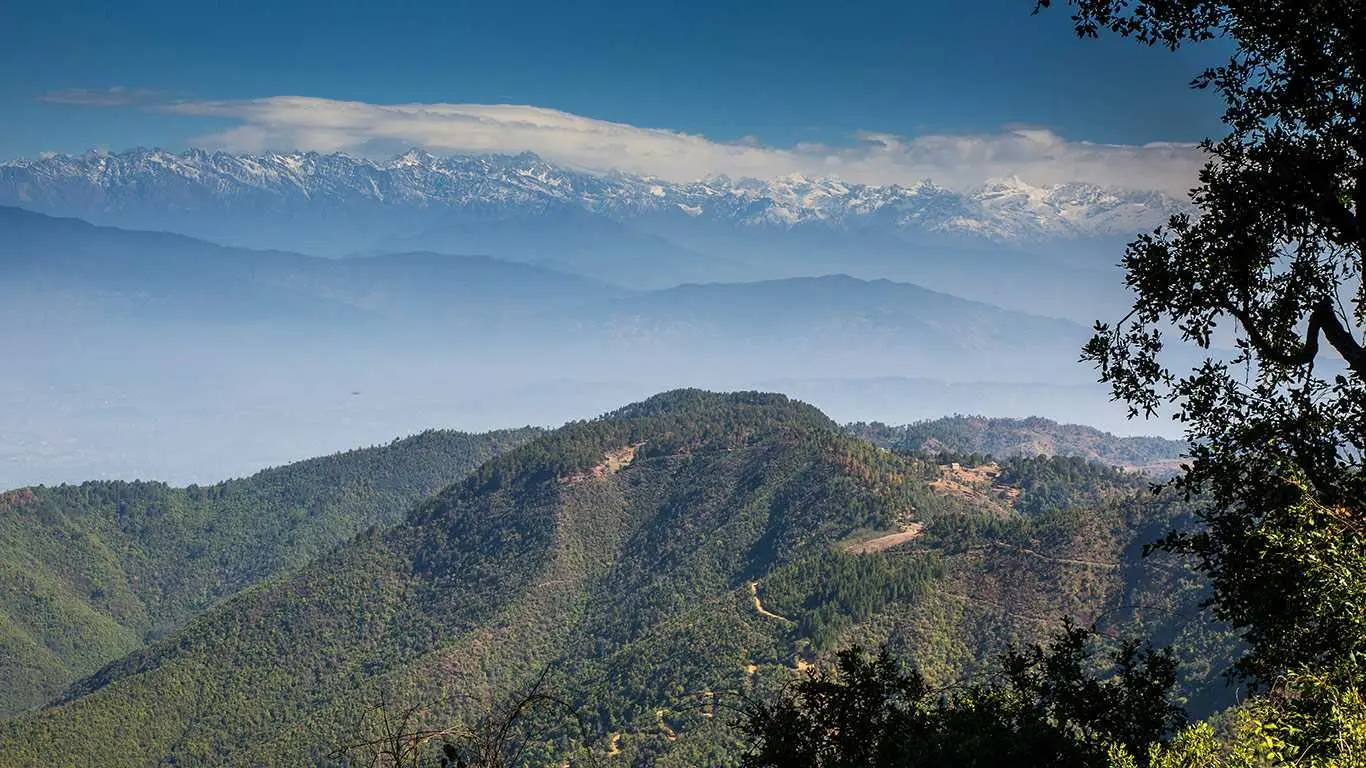Manasalu Circuit Trek 13 Days
Manaslu Region Trekking
Manaslu Region Trekking is a breathtaking adventure in Nepal, offering a unique and challenging experience for trekkers. Located in western Nepal, this region is named after Mt. Manaslu (8,163m), the eighth-highest peak in the world. The trekking route takes you through the Manaslu Conservation Area, home to diverse flora and fauna, picturesque villages, terraced fields, and dense forests.
Starting from Arughat, the trail follows the Budhi Gandaki River, offering stunning views of Manaslu, Ganesh Himal, and Himalchuli. The highlight of the trek is the Larkya La Pass (5,160m), which rewards trekkers with panoramic vistas of the Himalayas. The trek duration ranges from 14 to 21 days, depending on the itinerary, with the best seasons being September to November and March to May.
This trek is considered moderate to strenuous, requiring physical fitness and mental preparedness. Trekkers must obtain the Manaslu Conservation Area Permit (MCAP) and Annapurna Conservation Area Permit (ACAP) and must be accompanied by a licensed guide and porter.
Manaslu Region Trekking offers an unforgettable experience, combining cultural richness, stunning landscapes, and the thrill of high-altitude adventure in the Himalayas.
Detail Itinerary
After early morning breakfast, you drive to Soti Khola on a Local Bus. You will follow the Budhi Gandaki River towards the northern side and pass through Morder and Simre villages. It will be bumping and winding dirt road drive which will take around 7-8 hours. Tonight we will stay at Soti Khola. Breakfast, lunch & dinner included.
Our trek today traverses a mule track and ascends on a breathtaking path cut into the face of the cliff, then descends to Lapubesi (880m). Caution is required here! We then continue to Nauli Khola, crossing a suspension bridge on the way and then take the trail beside the Budi Gandaki River before reaching Machha Khola(900m). This so happens to be where many trekkers were stranded after the earthquake in 2015 and had to be rescued, Depending on current conditions, there is an alternative overnight stop in Kashi Gaun located on the east side of the river. Breakfast, lunch & dinner included.
Our route today follows the river to Khorlabesi and the tepid spring at Tatopani (meaning hot water) (930m), and then continues on the eastern bank of the Budi Gandaki River to Doban, Thulo Dunga and Yara Bagar (1370m). The trail zigzags across the river with several suspension bridges to cross before reaching the entrance gate to Manaslu Conservation Area and Jagat (1410m), with its unique flagstone village square. Permits are checked by authorities. Sherpa Expedition & Trekking will check that the route is passable, and may suggest we take an alternative route taking a much higher path on the east side of the river before descending to the old trail near Doban. Breakfast, lunch & dinner included.
Above Jagat, the trail climbs to Salleri and Sirdibas before reaching Philim. The landscape becomes increasingly barren as the trail winds past several waterfalls until reaching a junction at Ekle Bhatti where the trail leads to Lokpa a village on the trail to the Tsum Valley. We then climb above the junction of the Buri Gandaki and Shar Khola Rivers and then head to Pewa and finally Deng (1860m). Many villages in this area suffered extensive damage in the 2015 earthquake. Breakfast, lunch & dinner included.
Today we climb beyond the Tom (tum) Khola to Longa Chuta and then come into a captivating fir and rhododendron forest filled with birds and Langur monkeys located on the north side of the Buri Gandak Riveri. We then cross back to the other side of the river before reaching Namrung(2660m), an earlier customs post in the days when this was a route for transporting salt from Tibet. Namrung also suffered extensive damage from the 2015 earthquake, but today it has been restored to its previous charm. .Breakfast, lunch & dinner included.
Guest house accommodation. The trail today leads to Shyala (3520m) where a substantial number of buildings were damaged in the 2015 earhtquake, including the Gompa (Buddhist temple).. We continue on passing through a number of valleys and trails before arriving at the more remote village of Gompas and continue to Sama Gaun(3530) - also known as Samagaun. The town boasts of several fascinating monasteries in the village. Breakfast, lunch & dinner included.
At these higher altitudes it is necessary to get acclimatized, for at least one day, before attempting climbs to higher altitudes. Health specialists suggest that you move about and don’t sit idly. A good way to stay active is to explore the gompa at Pugyen(4070m), a one day hike that leaves the trail between Syaula and Sama. If time permits, it is possible for you to carry on up this valley to the rugged rocks and terrain of the Pugin glacier. Another option is a trip to the lake at Birendra Tal (3450m) and a demanding ascent to Manaslu Base Camp (4900m). It is believed that north of Birendra Tal is Milarepa's Cave (famous Buddha) claimed to have been used as a meditation retreat by the Buddhist saint. Breakfast, lunch & dinner.
Today the trail descends and heads back to the Buri Gandaki River passing the junction of Birendra Tal and Manaslu Base Camp. The valley expands before reaching Kermo Khadka and then continuing to the white Kani Gateway signaling the entrance to Samdo (3860m). If time permits we may trek to the peak above the village for impressive views of Mount Manaslu. If it is necessary to further acclimatize, there is a 6 t0 7 hour trek climbing 640m to the moraine of the Fukang Glacier, where you will be rewarded with far-reaching views towards several passes used by locals to cross over into Tibet. Breakfast, lunch & dinner included.
A relatively short day sees us descending through fields prior to starting our climb towards the Larkya-La Pass, a trek offering dazzling views of Manaslu and the Syacha Glacier, and a likelihood of spotting Himalayan blue sheep on your trek to Dharmashala (4480m). This is as high as we go today without risking altitude sickness. This is the last safe haven before reaching the pass. This sector of the trek is often subject to snowfall and from mid-December to mid-March, when snow blocks the Larkya-La Pass, the Samdo Lodge is typically closed. Your guide will know in advance if the lodge is closed. Breakfast, lunch & dinner included.
A 4 to 6-hour trek will see us cross Lakya-La Pass (5100m) and is the highest elevation on this trek. The climb is wintry and blustery and can often be hazardous, especially if there is snow on the pass. Your guide will check the condition of the crossing before leaving Samdo. The trail passes many cairns that are often covered in snow. It then traverses the moraine to four frozen lakes before ascending to the pass where a majestic number of peaks take your breath away. These include Himlung Himal(7126m), Cheo Himal(6820m), Gyaji Kung(7030m), Kang Guru(6981m) and Annapurna II(7937m). After this fantastic photo opportunity we descend in a westerly direction along a dangerous track before reaching Taubuche, where the trail becomes less demanding. The valley gradually opens up and then descends to Bimtang(3720m), one of the many trading posts along the Tibetan salt route. An appealing detour leads to a trail follows a trail above Bimtang to the translucent glacial lake of Pungkar Tal(4100m). Breakfast, lunch & dinner included.
Today we descend to Dudh Khola and Soti Khola(2700m) also known as Khare, following a trail directly below the enormous Phunki Peak(6258m). We then take a trail across the ridge heading downhill to the river before reaching Gho village. At this lower altitude it is noticeable greener as we descend through cultivated fields and forests and take the trail on the north bank of the Dudh Khola before reaching Tilche(2300m) the largest village since leaving Samdo. The village is well known for its flagstone paved streets and the home of Gurung. After passing Tilche through the Kani (gateway arches) we, then cross the stream before reaching Thonje. The trail to Dharapani(1920m) requires crossing a suspension-bridge over the Marsyangdi river. We are soon at the junction of the Annapurna Circuit trek where the going gets easier before descending to Bensi Sahar and ultimately Kathmandu. Breakfast, lunch & dinner included.
We leave Dharapani by jeep heading to Bensisahar – the final leg of our trek. You will take with you memories that will last a lifetime and photos of some of the most spectacular mountains in the world. We take the bus from Bensisahar to Kathmandu. Breakfast & Lunch Included!
Trip Map
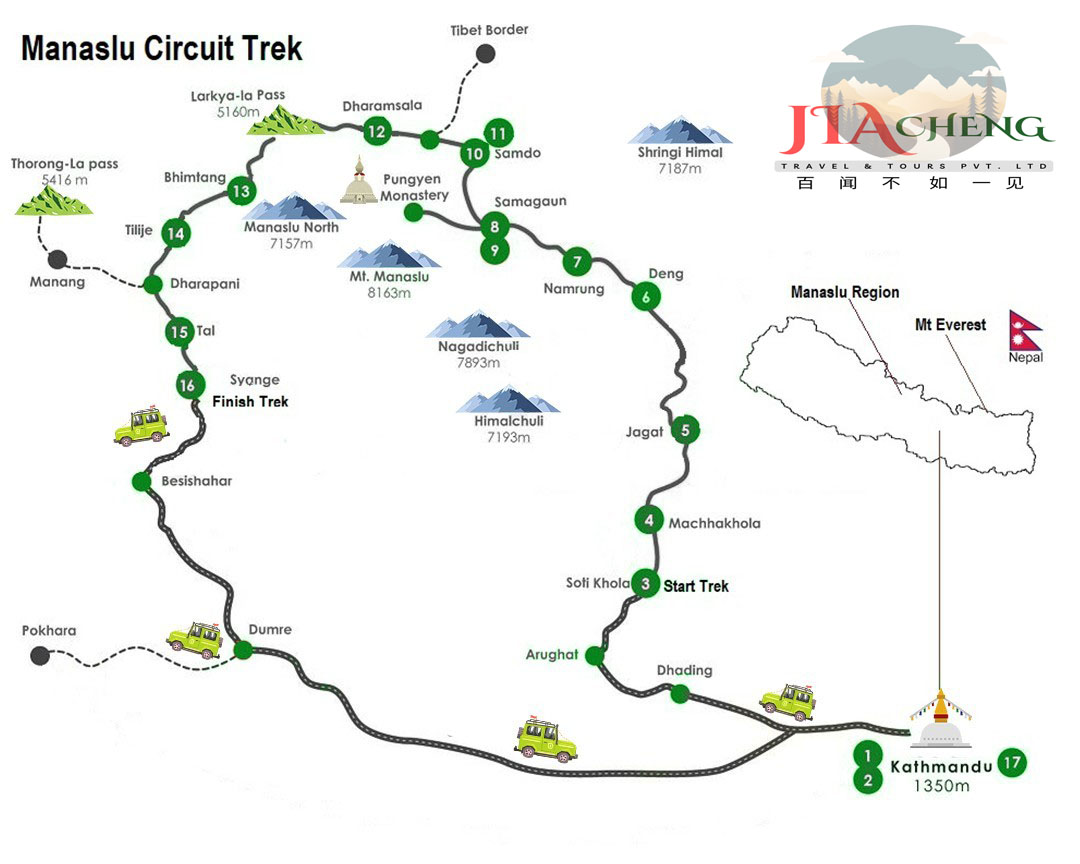
What's Included
- Private airport transfers for stress-free arrival and departure.
- Three nights of hotel stay in Kathmandu, with daily breakfast.
- All meals (breakfast, lunch, dinner) provided during the trek.
- Shared jeep transport for regional travel to and from trekking points.
- Accommodation in tea houses or tents along the trekking route.
- Management of all necessary trekking permits and paperwork.
- Round-trip flights between Kathmandu and Bhadrapur, with airport transfers.
- Experienced, English-speaking guide for a safe and informative trek.
- Support from reliable Sherpa porters, one per two trekkers.
- Comprehensive first-aid supplies and emergency helicopter arrangements.
- Provision of essential trekking gear: sleeping bag, down jacket, etc.
- Complimentary trekking t-shirt as a souvenir.
- Inclusion of all government taxes and official fees.
- Guided sightseeing tour of Kathmandu with private transportation.
- Daily oxygen level monitoring to ensure altitude safety.
- Assistant guide for larger groups of eight or more.
What's Excluded
- Meals in Kathmandu (lunch and dinner) are not included.
- Nepal entry visa fees are separate (available on arrival: $30 for 15 days, $50 for 30 days, $125 for 90 days).
- Personal travel and medical insurance is required and not included.
- International airfare is not included.
- Personal spending is your own responsibility.
- All alcoholic and non-alcoholic beverages, extra food, and drinks purchased during the trek are not included.
- Desserts and sweet items are not included.
- Hot showers and battery charging at tea houses are extra.
- Tips for guides, porters, and drivers are customary and not included.
- Kathmandu sightseeing monument entrance fees ($30 USD per person) are not included.
- Excess baggage fees for Bhadrapur flights (over 20kg) are not included.
- Early trek returns due to illness or other issues result in no refunds for prepaid services (flights, hotels, etc.), and you will bear all subsequent Kathmandu expenses.
Additional Info
EQUIPMENTS
The following information will give you some idea about what you need to bring for the trek. It is important you do not forget the essential items, as this will determine your comfort and safety on the trek. Equally important is that you do not burden yourself with unnecessary equipment on the trek.
General
- All season sleeping bag and down Jacket (we can provide if you need it, but has to be returned after the trek)
- Duffle bag ( Sherpa Expedition & Trekking provide duffle bag during the trek but has to be returned after the trek)
- A wind and waterproof thin layered jacket (a must-have for morning and evenings above 3,000m)
- Daypack
Upper Body- Head / Ears / Eyewear
- A pair of half gloves
- A warmer hat that covers the ears
- Sunglasses
- Neckwarmer
- Sunscreen (35 to 60 SPF)
- Headlamp and an extra set of batteries
Hands
- A pair of half gloves for walking poles(if you prefer)
- Warmer shell gloves and liner
Upper Body
- long sleeve t-shirts
- Thermal tops
- wool jacket or pullover
- Sports bras for women and girls
- Water and windproof shell jacket
Lower Body
- Thermal underwear (especially trousers)
- windproof and waterproof trousers
- warmer trousers
- Comfortable trekking pants
- Extra casual sport pants
Footwear
- A pair of good waterproof trekking boots
- Pair of sandals
- 4-5 pairs of woolen socks
- Sock liners
- Light shoes and sneakers
- First Aid Kits and Medicines
- Assorted adhesive bandages (fabric preferred)
- Blister treatment cream or similar
- Insect / anti-itch ointment
- Ibuprofen or other pain-relief medication
- Diamox (125mg to 250mg tablets for altitude sickness)
- Warps, splints, and wound coverings butterfly bandage
- Water purifying pills
(Note our company guide will carry the medicines and first aid kits during the trek. However, we recommend you bring your personal first-aid kit as well)
Miscellaneous - but must useful on the trek
- 4 passport size photos with original passport
- Water bottle & filter
- Flight details (please make a copy and leave one pic at our office in KTM because in case you want to change your flight date)
- Bathroom kit (conform, should be included toilet paper, plastic bags, hand wipes, towel, and soap, etc.)
Extra things
- Comfortable trekking poles
- Quality energy dry foods (up to you)
- Power bank and music players
- Camera (memory card, chargers, and extra batteries)
GOOD TO KNOW
The Manaslu Circuit Trek offers a unique and rewarding trekking experience in the remote Himalayan region of Nepal. Here are some essential points to know about the trek:
Accommodation:
Accommodation options along the Manaslu Circuit Trek range from basic teahouses to more comfortable lodges. Teahouses provide simple rooms with basic amenities such as beds and shared bathrooms. Lodges offer slightly more comfort with private rooms and attached bathrooms in some cases. It's advisable to be prepared for rustic accommodation in remote areas.
Food:
Local teahouses and lodges serve a variety of meals, including traditional Nepali dishes, as well as international cuisine such as pasta and noodles. It's recommended to eat cooked and hot meals to avoid food-related illnesses. Carry snacks and energy bars for additional sustenance during the trek.
Water:
It's crucial to stay hydrated while trekking. Carry a reusable water bottle and use water purification tablets or filters to ensure safe drinking water. You can also purchase bottled water at teahouses, but it's environmentally friendly to use a refillable bottle.
Physical Fitness:
The Manaslu Circuit Trek is a physically demanding trek that involves long hours of walking, steep ascents and descents, and high-altitude passes. Prior trekking experience and good physical fitness are essential to tackle the challenges of the trek. Regular cardio and strength training exercises can help prepare your body for the trek.
Best Time to Travel:
The ideal time to undertake the Manaslu Circuit Trek is during the spring (March to May) and autumn (mid-September to November) seasons. These months offer stable weather conditions, clear skies, and moderate temperatures, making for a comfortable and enjoyable trekking experience.
Transportation:
The trek typically starts from the village of Arughat Bazaar, accessible by road from Kathmandu. You can hire a private vehicle or take a local bus to reach the starting point of the trek. Return transportation is available from the trek endpoint in Besisahar back to Kathmandu.
Guide and Porter:
Hiring a local guide is recommended for the Manaslu Circuit Trek, especially for navigation, cultural insights, and safety. Porters can also be hired to carry your belongings, easing the physical load on your trek. Ensure that your guide and porter are experienced, licensed, and well-equipped for the trek.
Solo Travel:
While solo trekking is possible on the Manaslu Circuit, it's advisable to trek with a guide or join a trekking group for safety and support. Solo trekkers should inform someone about their itinerary, carry necessary supplies, and be prepared for the challenges of trekking alone in remote areas.
By being well-prepared and informed about accommodation, food, water, physical fitness, best timing, transportation, guide and porter services, and solo trekking considerations, you can enhance your Manaslu Circuit Trek experience and enjoy the beauty and adventure of this remote Himalayan journey.
Reviews (0)
Customer Reviews & Ratings
0.0 / 5.0
Based On 0 Reviews
5
0
4
0
3
0
2
0
1
0
Send an Enquiry
Why Book With Us
-
✔
Expert Guides with Local Knowledge
-
✔
Personalized Itineraries and Customization
-
✔
Safety and Comfort at Every Step
-
✔
Affordable Prices with No Hidden Fees
Need Assistance?
If you have any questions about this trek, feel free to contact us. Our travel experts are happy to assist you 24/7.
Contact Us